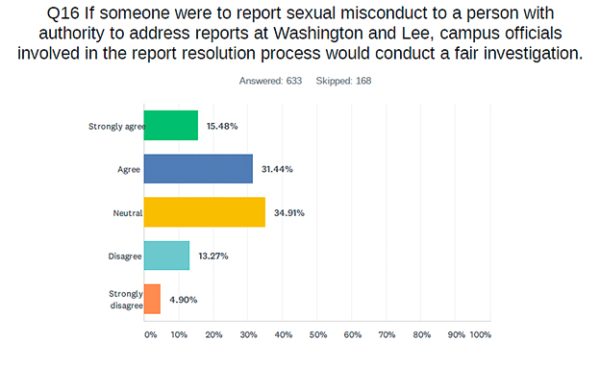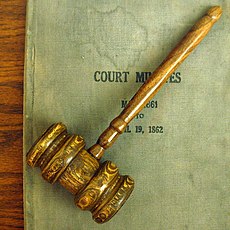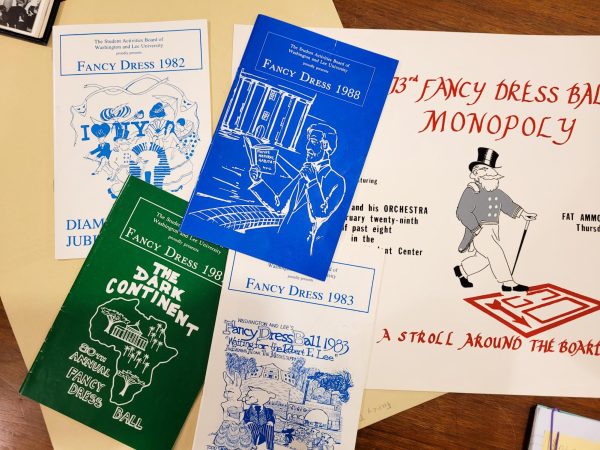Renovations to University Chapel delayed, dispute over its purpose continues
October 27, 2022
Construction to build a permanent wall inside of University Chapel separating the Robert E. Lee statue and family tombs from the rest of the auditorium is stalled amid debates over the landmark’s role on campus.
Renovations were supposed to begin in the summer, according to a press release published by the university in July. But the renovations were delayed with no set date for resuming, a university spokesperson said via email.
The plans were revised “in response to review comments from building officials,” the spokesperson wrote. “It became clear that there was more work to do regarding the permitting process.”
The review process for the renovation plans is ongoing, the university spokesperson said.But the official plans for the renovations, and the cost of the project, are not available to the public.
The Board of Trustees announced plans to physically separate the main auditorium from the statue and family crypt in June 2021, after voting 22-6 that same month to rename Lee Chapel to University Chapel.
“We are making changes to remove doubt about our separation from the Confederacy and the Lost Cause,” the Board said in a statement.
On Sept. 9, 2022, the Board released a fall update about the renovation plans. The construction of the wall “recreates two separate, publicly accessible spaces: one for university events and the other for the study of history.”
This physical separation has sparked backlash, the Board acknowledges in their statement, and “tensions inherent in attempting to reconcile the complicated histories of the chapel, the university, and our namesakes.”
The Board’s plan also proposes construction of a “new museum on campus where the university’s history may be told in its fullness.” But the Lexington City Council denied the university’s master plan amendment that included the museum “due to lack of sufficient detail” on June 9. The university was given the option to submit an updated plan, but so far no new plan has been presented.
Controversy surrounding the chapel’s renovations are bolstered by the complex history of the building’s purpose on campus: an identity search that is still ongoing.
The chapel’s role under Lee
Throughout the years, the chapel has taken many names and roles, according to the book “Lee Chapel at 150: The Complete History” by R. David Cox.
At the request of the then-Washington College president Robert E. Lee, “the chapel,” as it was known, was constructed in 1868. Lee insisted on the need for a new chapel because he believed that the “central building” (now Washington Hall) was too small for a meeting place for the entire student body.
“The college faced a problem – it had outgrown its facilities,” Cox wrote.
Two years after Lee’s request, the chapel was built and ready for use.
Originally called “The College Chapel,” it served both a spiritual and secular purpose. The chapel was the place where students gathered for assemblies, academic sessions, and for worship that began each day of the academic week. It also became Lee’s office.
The chapel served as a way to reconcile the South after the war in Lee’s eyes.
“Genuine national reconciliation relied on people of character,” Cox explained. “For Lee, character arose from religion. Promoting faith, then, was an integral element in Lee’s vision.”
When news of Lee’s death broke on Oct. 12, 1870, mourners flocked from far and wide to the chapel to see Lee lying in rest. And on the day of his death, the Board of Trustees voted to rename the college partially after Lee.
Shortly thereafter, discussions began on building a statue of Lee. Edward V. Valentine was selected to make the lifesize statue of the former Confederate general and college president. While the construction of the statue faced delays and a new addition had to be built to hold the statue, the chapel itself was “becoming the site of a Lee cult,” Cox wrote.
“The site of a Lee cult”
On Lee’s birthday in 1872, just two years after his death, former Confederate general Jubal A. Early delivered a speech commemorating Lee. The speech was delivered to a chapel filled with former Confederates who were arguing over who was to blame for the defeat in the Civil War.
Early urged the audience to remember Lee’s “marvelous ability and boldness as a military commander.”
This speech “was a crucial addition to the growing Lost Cause mythology. The chapel stood at the center of it,” Cox wrote.
By March of 1875, the Valentine statue of Lee was complete. This “signified the transformation of the building from its original intent fifteen years earlier,” Cox explained. “It would continue to serve the university as a meeting place for academic and religious functions. But now, as if by ritualized proclamation, it has become a shrine to Lee.”
While Lee was alive, he stressed his belief that the country should move past the war. Lee also was opposed to memorializing the Confederacy.
“I think it wiser not to keep open the sores of war but to follow the examples of those nations who endeavored to obliterate the marks of civil strife, to commit to oblivion the feelings engendered,” Lee wrote about a proposed Gettysburg memorial in 1869.
Lee opposed Confederate war monuments, a fact that is “often forgotten,” Jonathan Horn wrote in the Lee biography, “The Man Who Would Not Be Washington.”
For the next forty years, even as the worship function of the chapel declined, the larger significance of the chapel continued. That is until 1907, and the centennial celebration of Lee’s birth, according to Cox.
The then-university president George Denny sought a “Yankee” to speak at the centennial celebration of Lee’s birth on January 19, 1807. Denny wanted the speaker to “deliver Lee from the bondage of Confederate symbolism,” and invited Charles Francis Adams Jr., grandson of John Quincy Adams.
As Adams spoke to a chapel adorned with Confederate, Virginia, and U.S. flags and filled with admirers of Lee, his message perpetuated the “Lost Cause.”
“Under similar conditions, I would myself have done exactly what Lee did,” Adams said in his speech. “Lee and the Army of Northern Virginia never sustained defeat.”
Adams went on to make blatantly racist remarks that articulated the “prevailing white view, North and South, that all people of color and African Americans, in particular, were inferior to white,” Cox said.
Scholars cite this speech as making a bad situation worse. Adams’ speech enabled Lee’s character to be cited as justification for the “worst aspects of endemic racial bigotry,” Cox said.
Also, the chapel “became a more hallowed site… focused even more directly on Lee and his family… [and] solidified Lee’s connection not just with the South as a region but also with the image of the South in his own day: Confederate, white, racist,” Cox wrote.
Adams’ speech is commemorated in the chapel today with a plaque on the balcony.
The first push for renovations
Following Adams’ speech, there was renewed excitement to renovate the then-decaying chapel. This excitement proved to be the greatest threat to the chapel’s existence in its history, Cox wrote.
In 1913, Henry Louis Smith became Washington and Lee’s president and felt that the chapel’s style clashed with the modern architecture of the colonnade. He also felt the campus needed a space that could hold all of the students during events.
More importantly, however, is that Smith felt, and wrote in manuscripts, that Lee’s tomb deserved a more fitting monument “worthy of his name” than the “shabbily built pile of bricks.”
These beliefs motivated Smith to pursue a massive new chapel and monument: a building that would have been the focal point of Lexington and soared above all other buildings. Evidence of the chapel’s significance in the early 1900s is a postcard proclaiming the chapel as “The Westminster Abbey of the Confederacy.”
Smith achieved unanimous approval from the Board of Trustees. He attempted to hide his original intentions to demolish the existing chapel, by saying he wanted to “restore” the chapel, until it became the key point of resistance from those opposing his plan.
An unlikely combination of “a little group of willful women,” a crusading newspaper editor, alumni, and Lee admirers from across the nation saved the chapel and stifled plans for new construction.
The local Lexington United Daughters of the Confederacy (UDC) chapter agreed the chapel was “ugly,” but it was Lee’s chapel, and in upholding Lee it had to be preserved. So, the women began to pepper university officials and when they got nowhere, they enlisted the support of a newspaper editor to publish their opposition.
Matthew W. Paxton, a newspaper editor in Lexington and alumn of Washington and Lee, condemned “laying a hand of change on this chapel which Lee built and which from the day of his death has been his tomb.”
Once this opposition was published, it unleashed a war of words between Smith and those who resisted his plans, in particular, the Lexington UDC. Smith called those who opposed his plan “ludicrous” and even claimed that the Lexington UDC had ulterior motives to divert national funds away from Lexington and towards a museum in Richmond. Lexington UDC members called Smith and his supporters “cold-blooded.”
Members of Lee’s family and even former President Woodrow Wilson voiced their opposition in the later stages of plans to reconstruct the chapel.
Eventually, in the late 1920s, Smith’s downfall occurred because of two main reasons: he ignored his neighbors and hid his true goals, which were eventually exposed.
The Shrine of the South
The success of the campaign against a new chapel intrinsically linked the entire chapel itself to the level of a shrine. “The chapel not only contained Lee’s relic; it constituted a relic in itself,” Cox said.
As the university progressed, the chapel retained its importance as the “Shrine of the South.” Then, in the 1960s, the chapel became yet again the center of attention.
Lee Chapel was named a National Historic Landmark in 1961, and from 1962 to 1963 the university restored the Chapel with the support of the Henry Ford and the Ford Motor Company Fund. The chapel received a dramatic update of the interior, artifacts and the museum beneath it.
Issues of race also arose in the 1960s when the Board of Trustees, in 1961, denied a proposal from students to invite Rev. Dr. Martin Luther King Jr. to speak.
When the chapel was renovated in the 1960s, Confederate flags were removed. Many alumni accused then-President John D. Wilson of becoming “too ‘politically correct’– too bent on distancing itself from its past to tolerate those flags hanging above Robert E. Lee,” Cox wrote.
The university was able to reconcile some of those differences as time went on, but many underlying conflicts between members of the university community about the role of the Confederacy and the importance of Lee continue.
In 1998, Washington and Lee completed a major renovation of the then-Lee Chapel Museum to celebrate the University’s 250th anniversary happening the next year. Then, in 2007, the university installed a new exhibition to commemorate the 200th anniversary of Robert E. Lee’s birth.
Today, the chapel’s functional purposes are few: to hold events and special occasions like students’ honor system introduction and hear from speakers like Laura Bush, and to hold public honor system trials.
While the chapel has had many names since 1868 including “The Chapel,” “Memorial Chapel,” “Lee Memorial Chapel,” and “University Chapel,” it remains controversial regarding what significance it should have on campus.
“The chapel’s image, though, remains as complicated as that of its [former] namesake,” Cox maintained. “Both reflect, even embody, the ambiguities and contradictions of American history itself.”













Roger Jenkins • Nov 15, 2023 at 11:48 pm
They should have left it alone. The University would not exist had it not been for Lee. There are millions and millions of people who who know the truth of the war and when this woke crap blows over from the mainstream media the leaders of the university will have egg on their face. This country needs to start promoting common sense!!!!
Elizabeth Bernbaum • Nov 14, 2022 at 6:29 pm
This is a brilliantly written article. Thank you for the education!
Leslie • Nov 6, 2022 at 4:44 pm
I think it were not for the man taking on the job of a little college on the edge of nowhere you would never had made it. I believe you should continue to give the man the respect he deserves.
Jim Lake • Oct 31, 2022 at 12:34 pm
This story says “the official plans for the renovations … are not available to the public.” That’s surprising. I wonder what a FOIA request to the City of Lexington might yield.
JEFFREY DUKE SOUTHMAYD • Oct 29, 2022 at 10:26 am
“When the chapel was renovated in the 1960s, Confederate flags were removed. Many alumni accused then-President John D. Wilson of becoming “too ‘politically correct’” Wilson was president 1983–1995, and was responsible for the change to coeducation. The flags were removed by Ruscio, not Wilson.